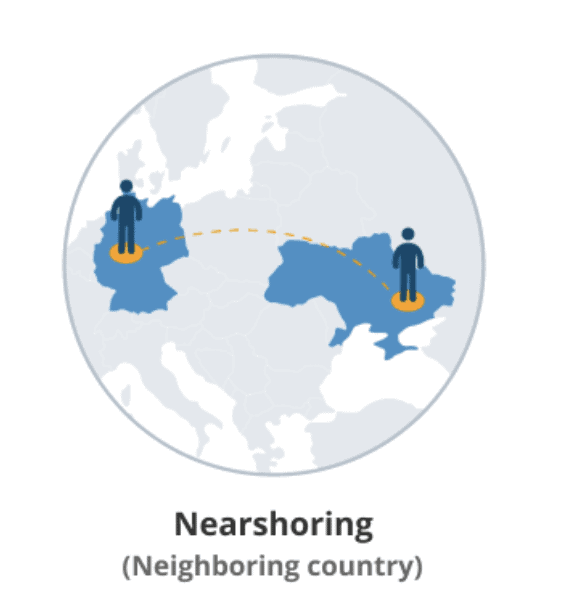We’ve all heard of outsourcing and offshoring: it’s time to talk about nearshoring. It can be a great tool for employers trying to find the right talent in today’s topsy-turvey economic times.
The demand for tech talent, particularly for software developers, continues to be a pain point for tech companies. There are simply not enough skilled engineers for the sheer number of positions available. While certain big names (think Amazon and Microsoft) are large enough to continue to draw talent with their known reputations and ability to offer top compensation packages and career growth, for the majority of employers, the struggle is real. While the pandemic brought the mixed bag of accelerating remote work and virtual teams, it also brought another solution into focus: nearshoring.
Most people are familiar with outsourcing, and the follow-up of “offshoring”, where companies sought to gain access to talent markets in other parts of the world where costs were lower. The offshoring of customer service centers to places like India or the Philippines has long been a common route. However, in software development, among other roles, the disadvantages of offshoring often outweighed the advantages. Prime among them: the time difference between the offshore contractors or employees and the home office. Usually this means there is a lag between communications, often around 24 hours. So it can slow down the process. This is less than ideal when writing a report, but a killer if you’re doing agile software development.
Agile development requires rapid iterations. It is a highly collaborative process, focusing on continuous improvement and flexible responses to changes in requirements. Having some of a dev team on the other side of the world, hours away from responding just doesn’t work. (For some methods, like the “waterfall” approach, where projects are divided into phases, offshoring can work fine.)
With these concerns in mind, nearshoring, or sourcing teams in the same or similar time zones, can make a lot of sense. There are large talent markets in Canada, Mexico, and Central and South America that our clients can tap into and get a huge amount done, all in one time zone. It’s one of the reasons TalentReach has a long term partnership with nearshore groups so we can access this talent for our clients.
The other huge advantage, besides just being able to fill these in-demand positions, is cost. Small scrappy startups who need to quickly build a large team, but don’t have the same access to financial resources that a gigantic company might have, can use nearshore resources to quickly scale up and accelerate into profitability. It’s a great way to build the next tech while being on a limited budget.
The war for talent – particularly software engineers – isn’t going away. There is currently a lot of “churn” in the market for these engineers, and lots of movement. Right now, we’re watching savvy employers snap up talent from small startups who may have grown too fast or are reducing their team sizes as cost-cutting measures. There still aren’t enough talented tech employees to go around. In that case, nearshoring is just one of the tools in our toolkit to get our clients the people they need to get them where they want to go.



Recent Comments